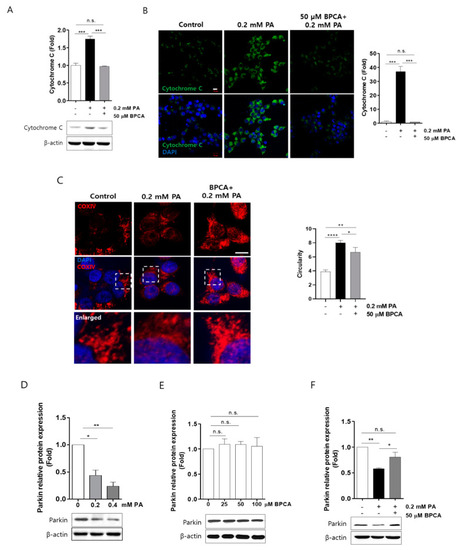Figure 4
- ID
- ZDB-FIG-210303-53
- Publication
- Cha et al., 2021 - 5-Bromoprotocatechualdehyde Combats against Palmitate Toxicity by Inhibiting Parkin Degradation and Reducing ROS-Induced Mitochondrial Damage in Pancreatic β-Cells
- Other Figures
- All Figure Page
- Back to All Figure Page
|
5-Bromoprotocatechualdehyde (BPCA) isolated from Polysiphonia japonica protects PA-induced degradation of parkin by combating cytochrome C release and morphology alteration of mitochondria in Ins-1 cells. Ins-1 cells were incubated with 50 µM BPCA for 1 h and then further incubated with/without 0.2 mM PA for 24 h. (A) Western blotting was subsequently performed as described in “Materials and Methods”. (B,C) Confocal image was subsequently performed as described in “Materials and Methods”. Scale bar: 10 µm. Circularity measures the average value per high-resolution micrograph using ImageJ. (D) Ins-1 cells were incubated with the indicated concentrations of PA (0.2 and 0.4 mM) for 24 h. (E) Ins-1 cells were incubated with the indicated concentrations of BPCA (25, 50, and 100 µM) for 24 h. (F) Ins-1 cells were incubated with 50 µM BPCA for 1 h and then further incubated with/without 0.2 mM PA for 24 h. Western blotting was subsequently performed as described in “Materials and Methods”. * p < 0.05, ** p < 0.01, *** p<0.005, **** p<0.001, n.s. = no significance. |

